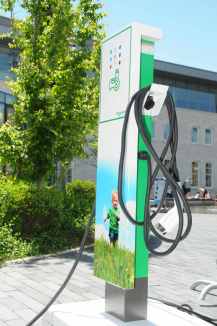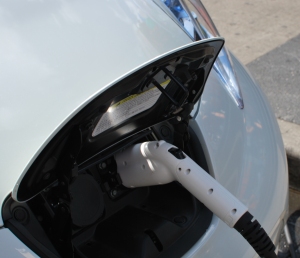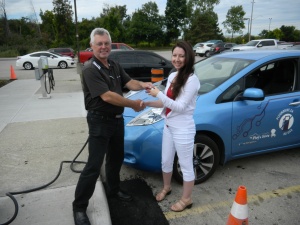A guest Blog from Travis Allan, DeMarco Allan LLP
 On July 7, 2016 the Ontario Energy Board (OEB) released a bulletin setting out OEB Staff’s view that ownership or operation of an Electric Vehicle (EV) charging station and the selling of EV charging services from such facilities do not constitute distribution or retailing of electricity. Staff also believes that electricity distributors are not precluded from owning and operating EV charging stations if the equipment provides for the management of load in keeping with Ontario’s goals for electricity conservation.
On July 7, 2016 the Ontario Energy Board (OEB) released a bulletin setting out OEB Staff’s view that ownership or operation of an Electric Vehicle (EV) charging station and the selling of EV charging services from such facilities do not constitute distribution or retailing of electricity. Staff also believes that electricity distributors are not precluded from owning and operating EV charging stations if the equipment provides for the management of load in keeping with Ontario’s goals for electricity conservation.
Staff bulletins of this nature do not bind the OEB in future decisions, but they are important sources of information and guidance for electricity industry participants.
If the OEB agrees with staff’s view, EV charging station owners and operators will not require distributor licenses to receive payment for EV charging services and regulated Ontario electricity distributors will be able to own and operate EV charging stations directly, rather than through an affiliate, subject to restrictions. These restrictions may support the uptake of “smart” charging, which allows distributors to control EV charging times and speeds.
OEB staff is of the opinion that an EV charging station[1] is not an electricity distribution system because EV charging stations do not provide distribution capability for loads other than EVs. As a result, OEB staff believes a person who owns an EV charging station is not required to obtain a distributor license from the OEB.
In a related conclusion, OEB staff believes the act of selling or offering to sell EV charging services does not constitute “retailing” and, therefore, does not require an OEB retailer license. OEB staff notes that persons selling or offering to sell EV charging services are providing a complete “vehicle refueling” service as compared to just commodity electricity and, unlike a standard electricity supply service, EV charging services can only be used to recharge an EV.
OEB staff holds the view that licensed electricity distributors are not precluded from owning and operating EV charging stations so long as the equipment provides for the management of load in keeping with the Government’s goals for electricity conservation. Typically, distributors are restricted from carrying on any business other than distributing electricity and, as explained above, OEB staff does not believe that owning and operating EV charging stations constitutes a distribution system or retailing electricity. OEB staff believes, however, that exceptions to this rule under Ontario Energy Board Act, 1998 s.71(2) relating to the promotion of electricity conservation and the efficient use of electricity as well as load management apply.[2] Specifically, EV charging can help optimize the use of assets by making more demand response tools available to distributors and facilitating off-peak charging. Having distributors involved in owing and operating EV charging stations, staff believes, may help facilitate load management and the efficient use of electricity.
OEB staff’s qualification that the equipment should provide for the “management of load” is likely significant. While some “smart” EV charging equipment is able to help distributors manage when and how quickly users charge, not all EV charging equipment contains these features. Information about Canada’s first residential smart charging pilot conducted by CrossChasm in partnership with Toronto Hydro can be found here.
For more information on electric vehicle policy, contact Travis Allan.


 Canada Place
Canada Place
 Vancouver’s premier attraction with a variety of cultural, educational, and outdoor adventures. Ski, ride, dine, and shop atop the mountain with its breathtaking view.
Vancouver’s premier attraction with a variety of cultural, educational, and outdoor adventures. Ski, ride, dine, and shop atop the mountain with its breathtaking view.